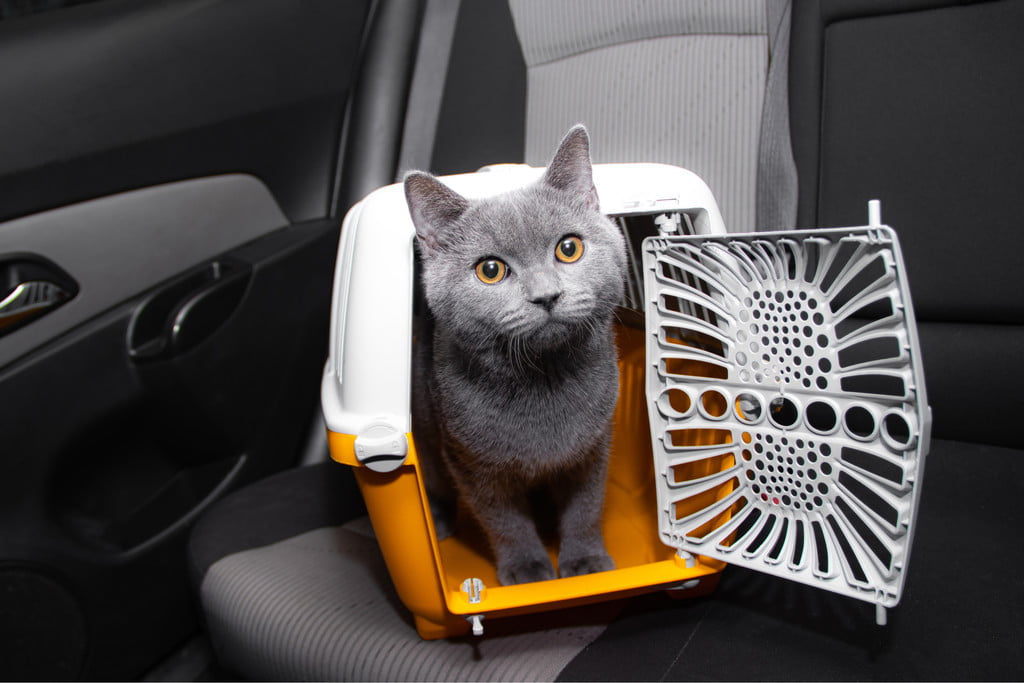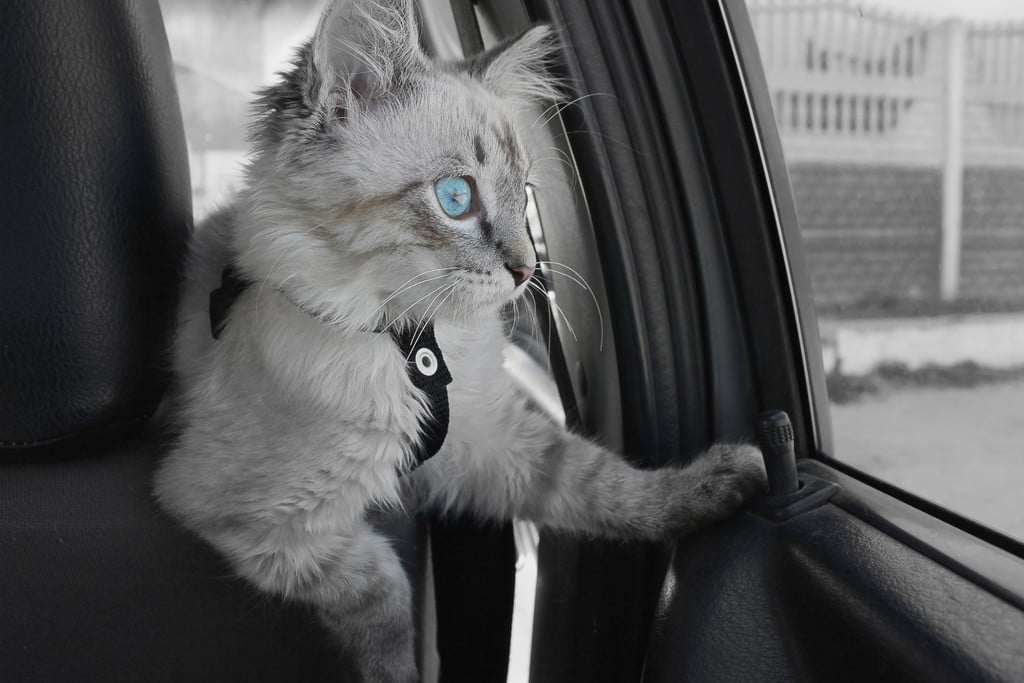Suppose for one second that you were a cat. You have a lovely home and a human to call your own. However, you’ve never been outside your domain. Oh, sure, you might have stepped outside once or twice, but you’ve never actually gone too far.
Now, suddenly, your human has grabbed you, stuffed you in a cage, and put you into this thing that moves in a weird way. It makes loud noises, and there’s lots of stopping and going. It’s enough to make any cat sick!
If you can picture that, you may understand why some cats dread car rides. You might also have a good idea as to why many people feel traveling with a cat in the car is a supremely unpleasant experience. As the cat’s owner, though, you can change that. In the article below, we’ll go over how to travel with a cat in the car. We’ll also look at how to help your cat look forward to heading out onto the highway.

Traveling with your cat by car
First thing’s first, you’re going to want to ensure that your cat is all groovy. By that, we mean safe and comfy. To accomplish that purpose, you should put your cat in a cat carrier that’s large enough that it can stand, turn around, and stretch. The carrier should also have padding on its interior so that your cat won’t get banged around if it should slip from its place.
Next, you’ll want to ensure safety by securing the cat carrier with a seatbelt. Remember, treat your cat with as much care as you would a baby.
Think about the time frame
How long can cats go without water? If your trip is six hours or less, you can feel okay leaving it inside the cat carrier for the whole time. However, suppose you’re going on a road trip to grandma’s house, and she lives a day’s drive away or farther. In that case, you’ll want to set periods when you allow your cat out to use the litter box and to drink some water.
Make sure you’re parked when kitty goes to the potty
Remember that a cat let loose in a moving car is a recipe for disaster. It might completely freak out (more than it may be already) and what with the yowling that’s sure to occur, and the distinct possibility that it could just decide to use your lap as its toilet, you could lose focus and get in a wreck. Then, your peeing cat goes flying right into the windshield. That’s undoubtedly something you don’t want happening.
To avoid unpleasant (even deadly) occurrences like those described above, always ensure that you’re parked and that both windows and doors are shut.
Make sure your cat is packing an ID
Whether you’re going on a short trip to the vet or a long drive elsewhere, you should always ensure that your cat is wearing an ID of one type or another. That ID should always include your name, address, and phone number. If you don’t like the thought of your home address being on the ID, substitute it with your email address.
Make sure there’s a way for someone to contact you if your cat gets lost and they find it.
Don’t feed your cat before driving
You should never feed your cat in the hours before driving somewhere. You don’t want a cat with motion sickness puking all over the inside of its carrier. The same goes for feeding the cat while driving. Wait to feed it until you’ve stopped for the evening.

Your cat’s fur coat isn’t enough
If you’re traveling in winter, this tip goes to keeping your cat comfortable. It can often take a while for the car’s heater to adequately warm the interior of the car. If you’re cold and you’re wearing a coat, it’s a safe bet that your cat is cold too. Be kind and ensure you’ve got some blankets to pile around the cat carrier to insulate it a bit from the cold temperatures. You might also consider placing a little kid blanket on the bottom of the carrier for your cat to snuggle into.
Bring frozen bottles of water with you
Say you’re traveling in the middle of summer and your air conditioning goes out. In that case, you’ll want to help your cat stay cool because it can’t sweat in the same way you do. Inside its car carrier, your cat could quickly overheat. To prevent that from happening, take some frozen water bottles with you and keep them in a cooler. If you feel like it’s just way too hot for you, it’s definitely too hot for your feline companion.
Wrap a couple of the frozen bottles in cloth and then put one on each side of the carrier’s interior.
Enjoy your trip
There’s just one last thing to keep in mind. If you’re just going on a short vacation, it’s a much better idea to let a family member or friend take care of your pet until your return. However, If you don’t have any other options and your cat needs to travel with you, then keep everything above in mind. Traveling in your car with a cat can be an adventure, to say the least!


